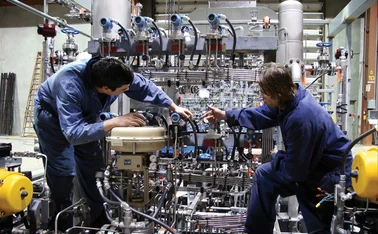
Google chief economist Hal Varian offers machine-learning insights
No branch of economic theory seems to hold true in reality, says Varian

The newfound ability of economists to examine vast swathes of real-time economic data using advanced computer programmes has failed to reveal that any particular branch of economic theory holds true when tested in reality, according to Hal Varian.
Google’s chief economist says that, although the advent of machine-learning techniques using big data has provided important new insights into how the real economy reacts to certain economic stimuli, it is likely there are multiple factors at work, rather than any single economic principle.
In an interview with Central Banking, published on December 18, Varian says models tend to focus on one effect or another, but “in reality, they all have a role to play”.
“You want to sort out the relative magnitude of these different possible effects, how quickly people become aware of them and how quickly behaviour responds to changes in policy,” Varian tells Central Banking. “That’s where you really get the biggest impact of being able to quantify some of these effects and talk about relative importance.”
Varian, the author of Intermediate Microeconomics – a staple read for many economics students around the world – believes research to date indicates investment decisions by firms are not typically made based solely on interest rates and prices: “They’re obviously driven by expectations about the future – some would call these expectations ‘animal spirits’.”
He says data studies have indicated there is a “little bit of adverse selection and a little bit more moral hazard”.
Google’s chief economist adds that another lesson learned from studies of real data looking at how the actual economy works is that it “moves slower than economic theory would predict”.
This poses a challenge to economic theories that require equilibria. Varian says this dynamic element of economics probably requires more attention, as there “aren’t really very good theories on how quickly ideas or events will unfold”.
While progress is being made using machine-learning techniques to discover interesting patterns in economic data, Varian accepts that “it’s another thing to really infer causal patterns”. He urges central banks to continue to experiment in this area, even though some of the experiments will be failures.
Varian also believe there is more potential from ‘agent-based modelling’ – where small units of data are used as the basis for a computer simulation to see how the system as a whole would work.
Only users who have a paid subscription or are part of a corporate subscription are able to print or copy content.
To access these options, along with all other subscription benefits, please contact info@centralbanking.com or view our subscription options here: subscriptions.centralbanking.com/subscribe
You are currently unable to print this content. Please contact info@centralbanking.com to find out more.
You are currently unable to copy this content. Please contact info@centralbanking.com to find out more.
Copyright Infopro Digital Limited. All rights reserved.
As outlined in our terms and conditions, https://www.infopro-digital.com/terms-and-conditions/subscriptions/ (point 2.4), printing is limited to a single copy.
If you would like to purchase additional rights please email info@centralbanking.com test test test
Copyright Infopro Digital Limited. All rights reserved.
You may share this content using our article tools. As outlined in our terms and conditions, https://www.infopro-digital.com/terms-and-conditions/subscriptions/ (clause 2.4), an Authorised User may only make one copy of the materials for their own personal use. You must also comply with the restrictions in clause 2.5.
If you would like to purchase additional rights please email info@centralbanking.com test test test








